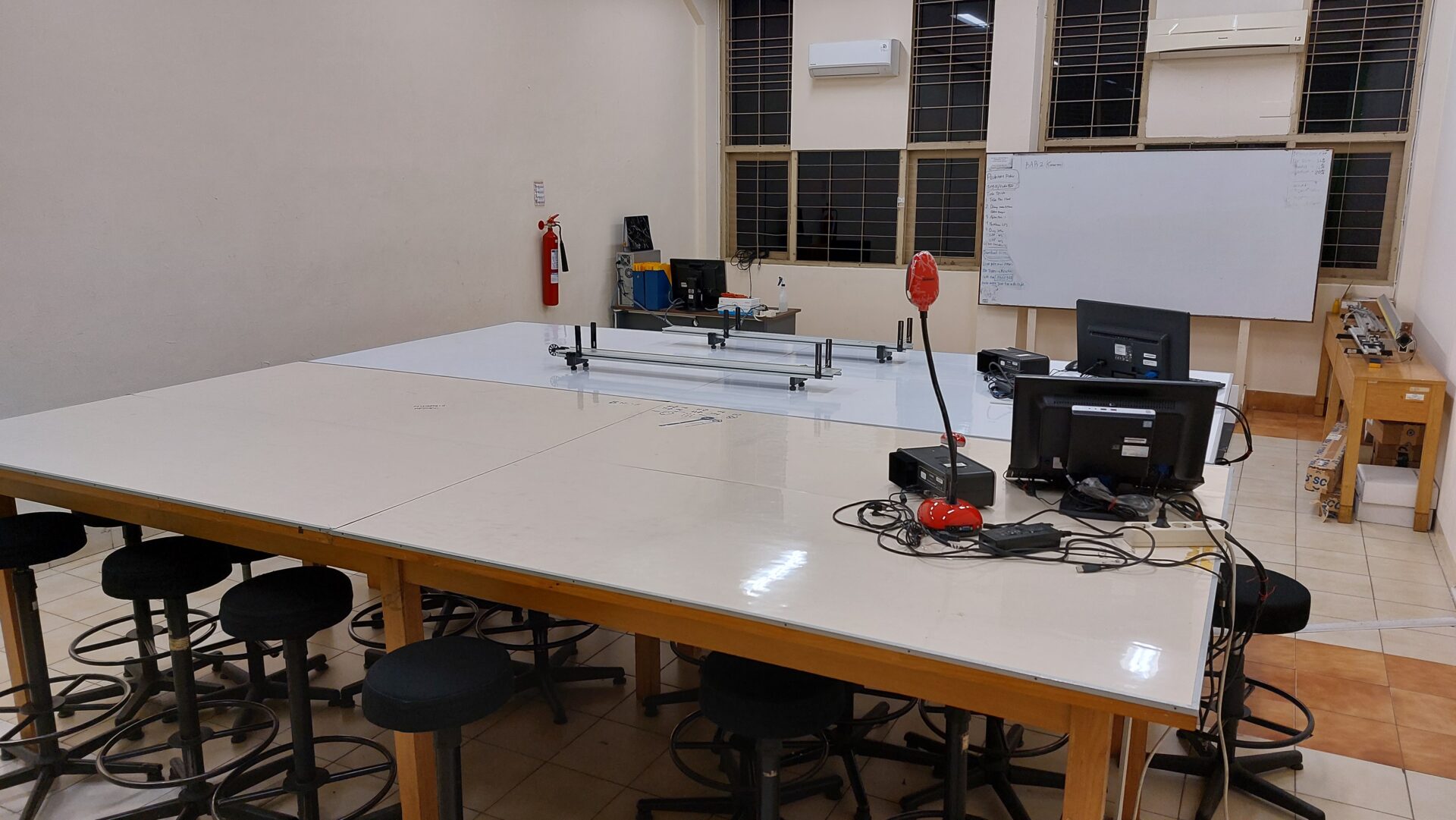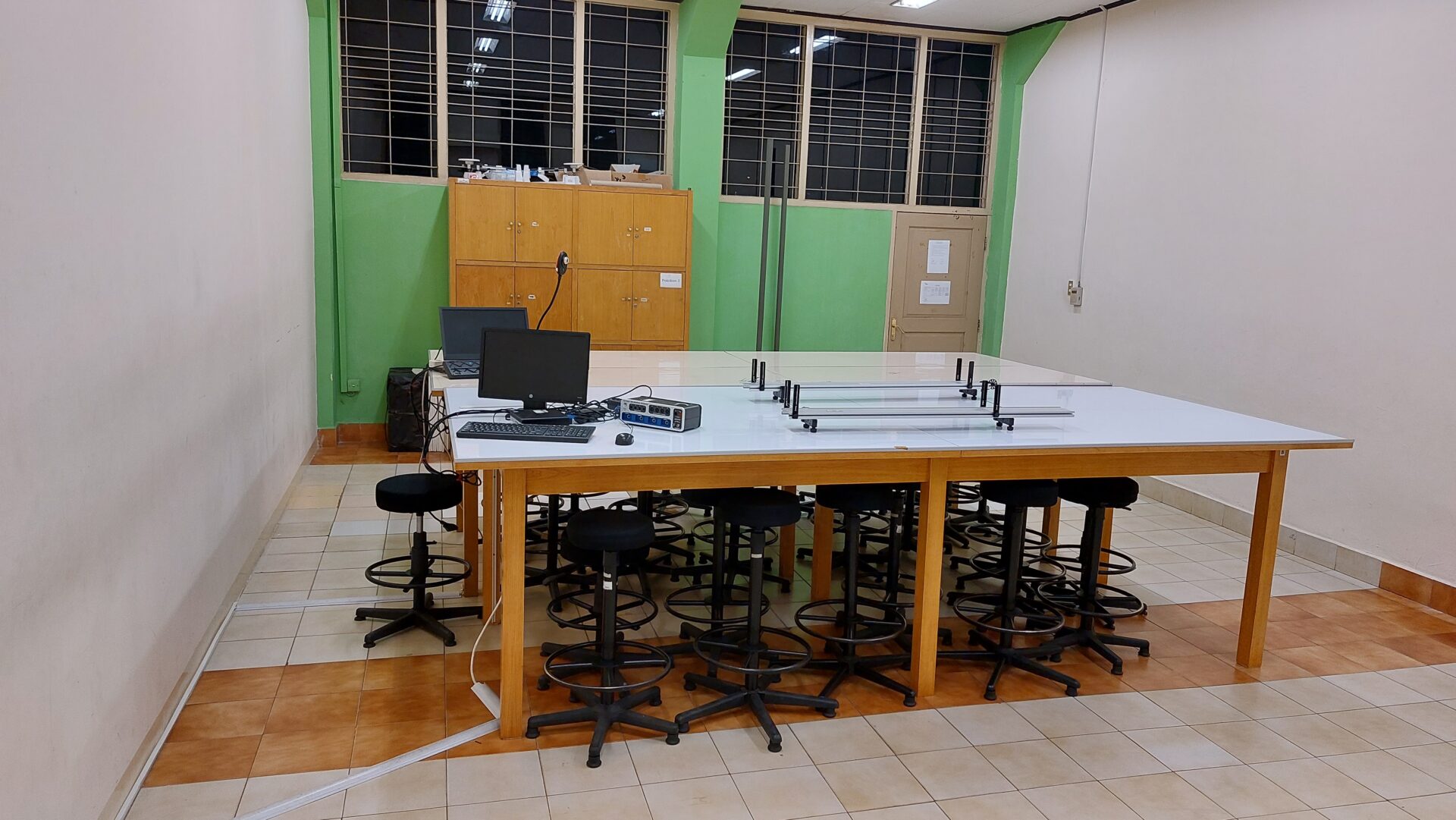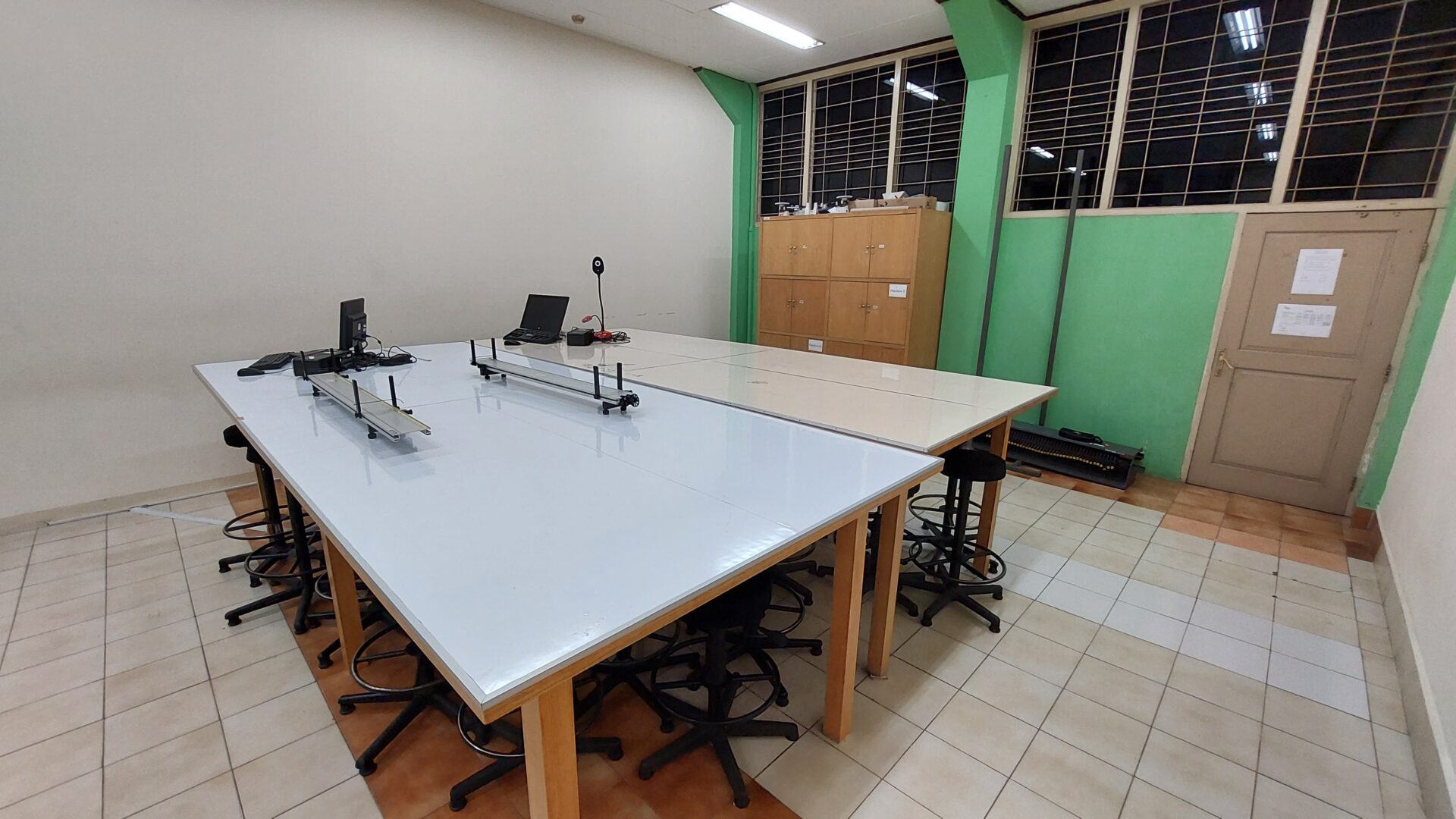L1D – Physics Laboratory

Located in building “L” on the 1st floor of it and the “D”-th room in the 1st level. This room is busy as it must hold every engineering student every semester for freshmen (Semester 1 and 2 students). Within the hallowed halls of the engineering department, two distinct realms of scientific exploration converge – the Physics 1 and Physics 2 laboratories. These laboratories serve as crucibles of knowledge, where theories transform into tangible understanding under the guidance of laboratory assistants. While traditionally associated with specific branches of engineering, these laboratories open their doors to students from every engineering major, fostering a collaborative environment of discovery and innovation.
- Physics 1 Laboratory: Unraveling Mechanical Mysteries
Step into the Physics 1 laboratory, and you’ll find yourself immersed in a world of mechanical marvels. Here, students delve into the fundamental principles that govern motion, forces, and energy, exploring the intricate dance of objects in the physical realm.
Under the watchful guidance of laboratory assistants, students engage in hands-on experiments that bring theoretical concepts to life. From Newton’s laws of motion to the dynamics of mechanical systems, each experiment serves as a steppingstone towards a deeper understanding of the physical world.
But the laboratory is more than just a place of scientific inquiry; it’s a crucible of collaboration, where students from diverse engineering disciplines come together to exchange ideas and perspectives. In this dynamic environment, boundaries blur, and innovation thrives as students apply their newfound knowledge to real-world challenges.
- Physics 2 Laboratory: Illuminating Electrical Insights
Across the corridor lies the Physics 2 laboratory, a realm, where, electrons dance and circuits hum with energy. Here, students embark on a journey into the realm of electrical theory, unraveling the mysteries of voltage, current, and electromagnetic fields.
Led by experienced laboratory assistants, students dive into a series of experiments designed to illuminate the principles of electrical engineering. From Ohm’s law to the intricacies of circuit analysis, each experiment serves as a gateway to a deeper understanding of electrical phenomena.
But the laboratory is more than just a proving ground for theoretical concepts; it’s a collaborative space where students from all engineering disciplines converge to explore the intersection of electricity and innovation. In this crucible of creativity, ideas are forged, and boundaries are shattered as students apply their knowledge to engineer solutions to real-world problems.






